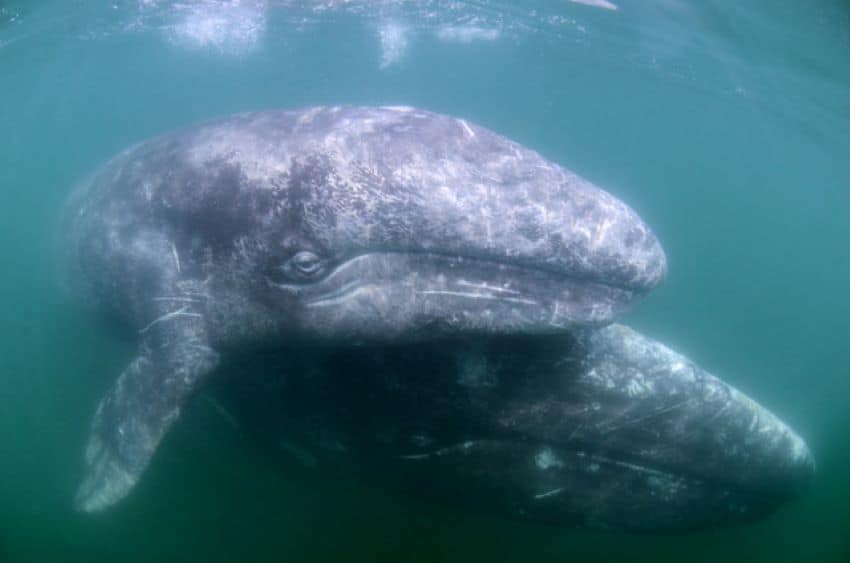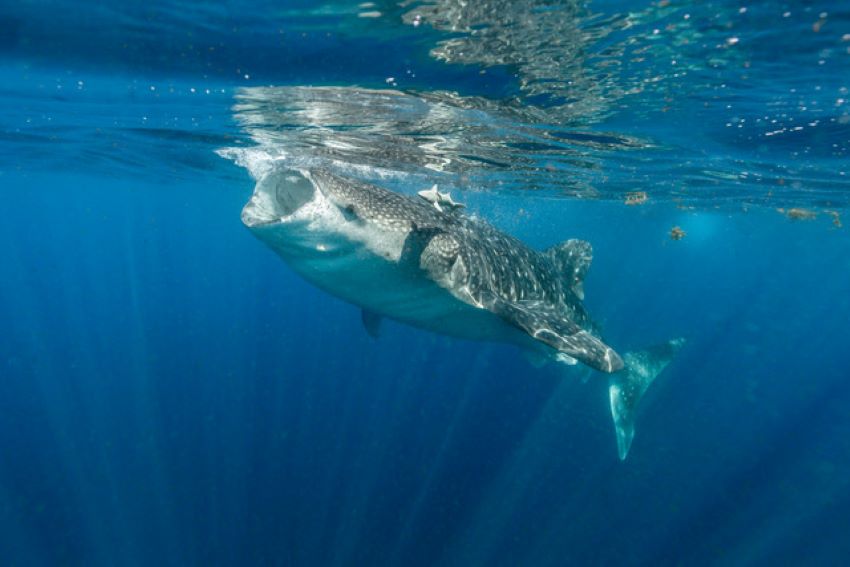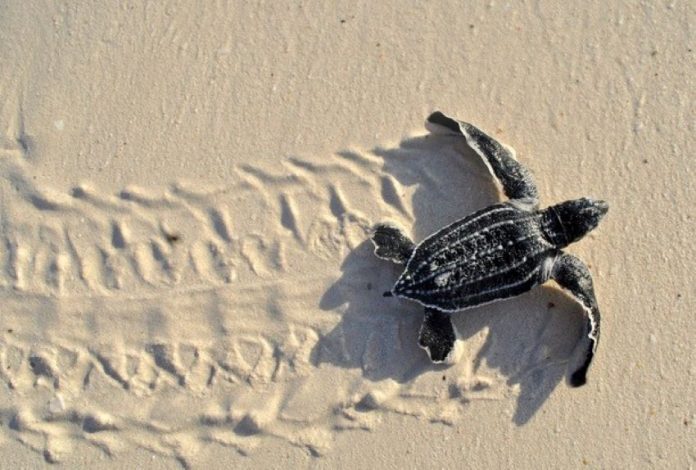Today, on International Mother Earth Day, it is fitting and just to honor the strength of the feminine.
It is not a celebration that refers specifically to women — neither as mothers, partners, daughters nor sisters. I illustrate it as a tribute to the complementary powers that manifest themselves, often epicene, sometimes opposing one another, within the feminine and masculine of the animal kingdom.
What drives a leatherback sea turtle that feeds in Japan to swim 11,000 kilometers across the Pacific to lay her eggs on the same beach where she was born decades before on the Mexican coast of Michoacán, Guerrero or Oaxaca?
What kind of invisible force does a pregnant gray whale respond to by swimming 8,000 kilometers for five months, day and night, without stopping or eating, from the Arctic to the coastal lagoons of the Baja California peninsula to give birth?
What drove the famous whale shark, Rio Lady, probably pregnant, to depart Isla Mujeres in the Mexican Caribbean to navigate 8,000 kilometers across the Atlantic to Africa, by way of the Saint Peter and Saint Paul Archipelago, a thousand kilometers off the coast of Brazil?

And why does a monarch butterfly, weighing just half a gram, fly 3,000 kilometers from Canada and the United States to reach the oyamel, pine-oak forests of central Mexico, where she mates to ensure the survival of her species?
The truth is, we don’t actually know. Certainly, these are manifestations that have been nurtured over millions of years and form part of the intricate evolutionary-ecological web of life. Perhaps they are ancestral expressions of archetypical appeals that affirm the feminine, the yearnings of a deep, shared animal subconscious.
Whatever the case, today let us not miss the opportunity to rejoice in the natural world and the vital force of the feminine essence — one that, in the broad sense, is found within the chromosomes of all human beings and surely also in the cosmos.
In that context, let us go back to the insects, to those millions of species of bugs whose ascendancy has given them jurisdiction over our planet’s terrestrial world for over 400 million years, those ever-present arthropods equipped with two antennae, three pairs of legs, two pairs of wings.
On this Earth Day, let us think about the 380,000 species of beetles, over 20,000 species of bees, 135,000 species of flies and mosquitoes, and 120,000 species of butterflies and moths. Why? Because without them, Earth, us, would not be what we now are. Without the work of insects, especially the pollinators, humans would be in dire straits.
My favorite insect, by far, is the monarch butterfly because it embodies the essence, the reach, of the feminine. No wonder that the Greek word psyche refers to the soul of a woman, or to a butterfly!

The monarch: that indefatigable traveler that performs the second-longest migration of all insects — the first being the globe skimmer, Pantala flavescens, a transoceanic dragonfly that travels 14,000 kilometers between India and East Africa. The monarch: a migrant without a visa, the butterfly that travels the skies of three countries to unite them as an indivisible landscape.
Because of its genetic assemblage, the monarch knows when to depart from Canada, how to maneuver the inhospitable heartland of the United States and when to arrive at its Shangri-la on top of the mountains of the states of Michoacán and México. Its journey is a natural wonder that is today threatened by the glyphosates that destroy its habitat in the United States, by the illegal logging in its hibernation forests in Mexico and by climate change.
If we allow the monarch, and other insect species for that matter, to be taken from us, it is not just a butterfly or a magnificent migration that we will have lost. We also lose the enormous environmental services associated with the pollination of wild plants and humankind’s crops. We would lose the ancestral stories and folklore that bond the three countries. We would lose the superstar ambassador of the feminine element of being.
On Earth Day, as a tribute to the feminine component in all of us, let us pause for a moment to think about the metamorphosis of each of those 400 little yellow eggs of 0.46 milligrams each that a monarch lays — the eggs that after just two weeks turn into caterpillars 3,000 times larger than the egg.
Let us rejoice in the chrysalises, the butterflies, their daughters, granddaughters, great-granddaughters and the great-great-granddaughters; the latter are precisely the ones that have flown back to Mexico every winter since primeval times.
I finish these thoughts on a personal note. One winter, 15 years ago, my daughter, Pía (at the time, just 4 years old) and I walked, hand in hand, at 3,000 meters above sea level among oyamel and oak forests at El Rosario, a community monarch butterfly sanctuary in the state of Michoacán.

We will never forget that deafening stream of lepidopterans that mowed us down, those fast-flying “flutterbys” that descended to gulp the droplets left by the morning mist. With our eyes closed and curling up, we hugged each other, waiting until the orange-and-black winged Danaus plexippus crowd chose to dissipate.
Now I wonder if they were perhaps the descendants of the yellow butterflies that always accompanied the appearances of Mauricio Babilonia, that magic character of Gabriel García Márquez´s One Hundred Years of Solitude.
I am wholeheartedly convinced that the survival of all species, and of Planet Earth, rests on the vitality and generosity of the feminine.
These lines, I have written for Pía.
Omar Vidal, a scientist, was a university professor in Mexico, is a former senior officer at the UN Environment Program, and former director-general of the World Wildlife Fund Mexico.
